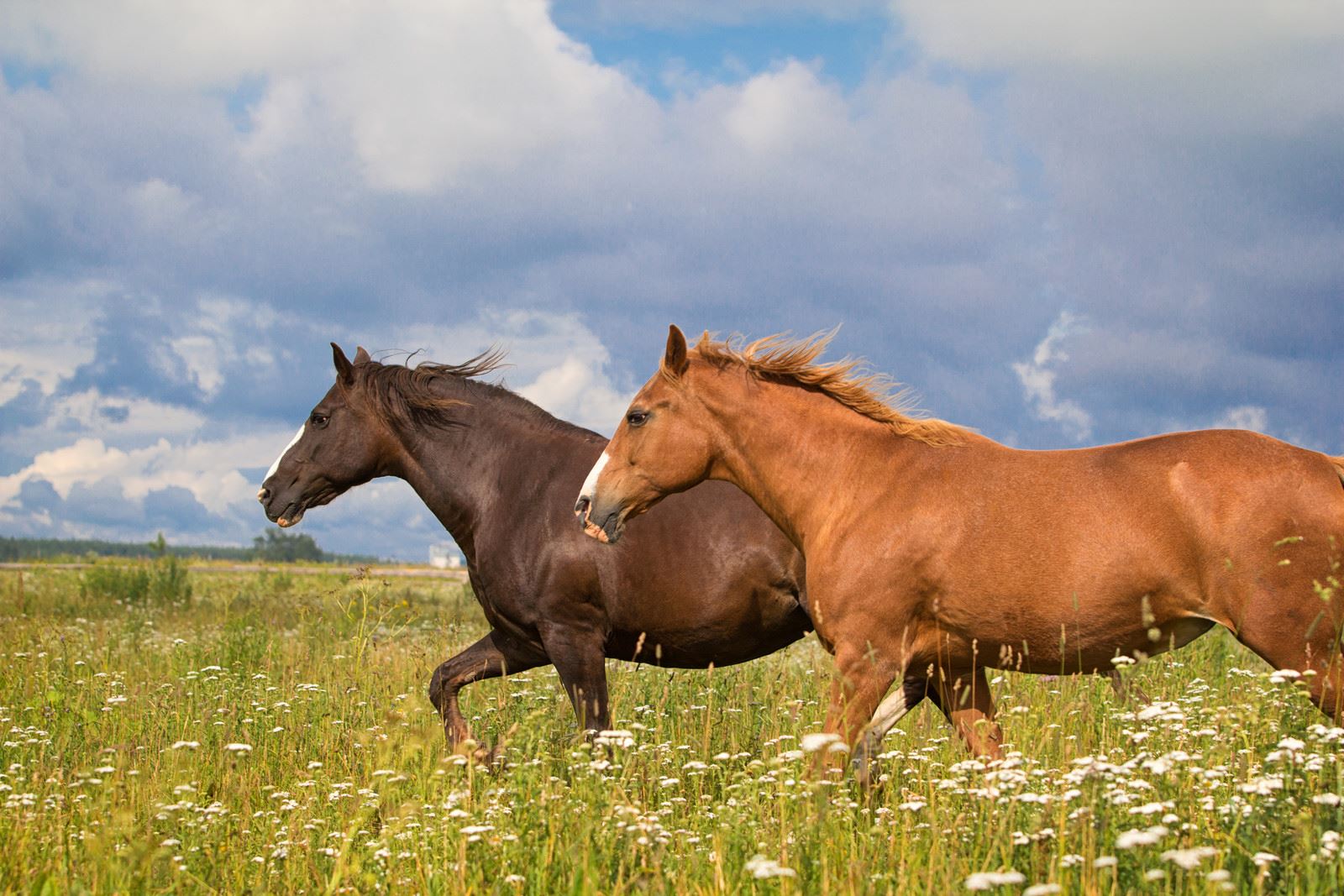Equidae have evolved into two groups of social organization. One group consists of Grevy's zebra (E Grevyi) and wild asses (E africanus, E hemionus); the second consists of the horse (Equus ferus), the plains zebra (Equus quagga), and the mountain zebra (Equus zebra). For the purposes of this document, we are going to focus on the second group.

Horses in this group form permanent family groups, with less permanent stallion, bachelor, and peer groups. Young horses leave family groups at defined ages. There are no established territories, and movement is seasonal with the group relocating together. These species do not live in changeable temporary groups, neither are there solitary territorial males.
Studies that observe feral populations without human intervention gather the most accurate data on social structure and interactions. What has been determined from these studies is this:
Equines form lasting social relationships within long-term family groups. Changes occur as the result of certain situations, including:
- Youngsters leave their family group of their own accord, between the ages of two and four.
- Those that do not leave by choice are eventually chased away, usually by their father.
- Death of a group member.
- A group is taken over by a competing stallion and the existing stallion is expelled.
Group Structure
There is no one horse who leads the group. Any horse, including the youngsters, may initiate a change in movement or direction. The overriding factor for who initiates a change is driven by whoever is the most motivated. If a horse is thirsty, he will initiate a move to the drinking area. If a horse is particularly scared of something, that horse will move away from what scares him before others, thus initiating movement away. Youngsters may wander off and investigate, prompting others to be inquisitive and see what they have found. Sometimes, a horse initiates a move and no one follows. The horse may try several times, and may or may not be successful. Motivation drives movement, and whether other horses follow or not is based on whether it is safe, they have a specific motivation to remain, or are happy to follow along. When there are very small groups, it is likely that an older, wiser horse initiates more movement than younger ones. These factors make it look like horses have one specific leader, but, in fact, this is unnatural equine behavior.
Family Group
Family groups range from one stallion with one-five mares to between two-12 breeding adults of one-11 mares. Groups may consist of two-20 or more horses. Changes to the groups are infrequent with mares usually staying with their family group for life.
Other Groups
Peer groups are made up of immature youngsters of both sexes, who eventually join a family group. Bachelor groups consist of young males that have not yet found their own family group. Older stallions that have been displaced from a group may form their own stallion group, or may join a bachelor group.
Relationships
Typically, each horse will have one or two close friendships within the group, regardless of the size of the group. Horses will spend more of their time with their friends than away from them, and engage in a number of reciprocal activities. The following points are noteworthy:
- Agonistic interactions increase when there is social stress.
- There is no evidence to support territorial dominance.
- Horses defend their group, and mares in estrus, not their habitat.
Resources
Berger, J. (1977). Organizational systems and dominance in feral horses in the Grand Canyon. Behavioral Ecology and Sociobiology (2) 2 131-146. Available at: https://link.springer.com/article/10.1007/BF00361898
Bourjade, M., Thierry, B., Maumy, M., & Petit, O. (2009). Decision-Making in Przewalski Horse (Equus ferus przewalskii) is Driven by the Ecological Contexts of Collective Movements. Ethology 115 (4) 321 – 330. Available at: https://www.researchgate.net/publication/227740162_Decision-making_in_Przewalski_horses_Equus_ferus_przewalskii_is_driven_by_the_ecological_contexts_of_collective_movements
Feist, J., & McCullough, D. (1976). Behaviour patterns and communications in feral horses. Zeitschrift für Tierpsychologie 41 (4) 337-71. Available at: https://www.researchgate.net/publication/22172391_Behavior_Patterns_And_Communication_In_Feral_Horses
Feh, C. (1987). Etude du développement des relations sociales chez des étalons de race Camargue et de leur contribution à l’organisation sociale du groupe. University of Aix-Marseille, France: Thèse d’université
Kiley-Worthington, M. (1997). Communication in Horses: Cooperation and Competition. Eco Research Centre, University of Exeter, United Kingdom: Publication 19
Klingel, H. (1974). The Behaviour of Ungulates and its relation to management. The Papers of an International Symposium held at The University of Calgary, Alberta, Canada 2-5 November 1971: Paper No. 5. A Comparison of the Social Behaviour of the Equidae. IUCN Morges, Switzerland: Ungulate Behaviour Papers. Available at: https://portals.iucn.org/library/efiles/documents/NS-024-1.pdf
Linklater, W.L., Cameron, E.Z., Stafford, K.J., & Veltman, C.J. (2000). Social and spatial structure and range use by Kaimanawa wild horses (Equus caballus: Equidae). New Zealand Journal of Ecology 24 (2): 139-152. Available at: https://newzealandecology.org/system/files/articles/NZJEcol24_2_139.pdf
Pusey, A.E., & Packer, C. (1997). The ecology of relationships, in Krebs, J.R., and Davies, N.B., eds. Behavioral Ecology – An evolutionary approach p. 254–283. Malden, MA: Blackwell Publishing
Rees, L. (2017). Horses in Company. London, United Kingdom: J.A. Allen
Skipper, L. (n.d.) The Myth of Dominance. Available at: http://www.ebta.co.uk/dominance-ls.html